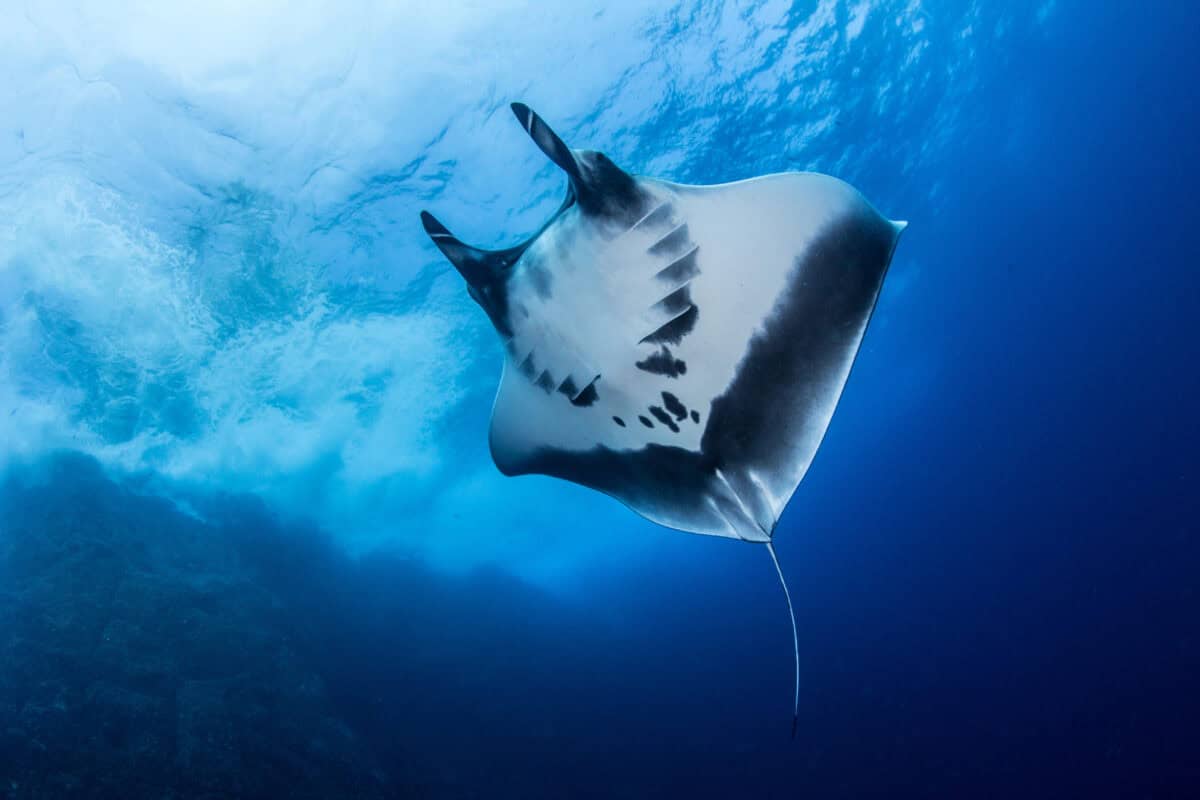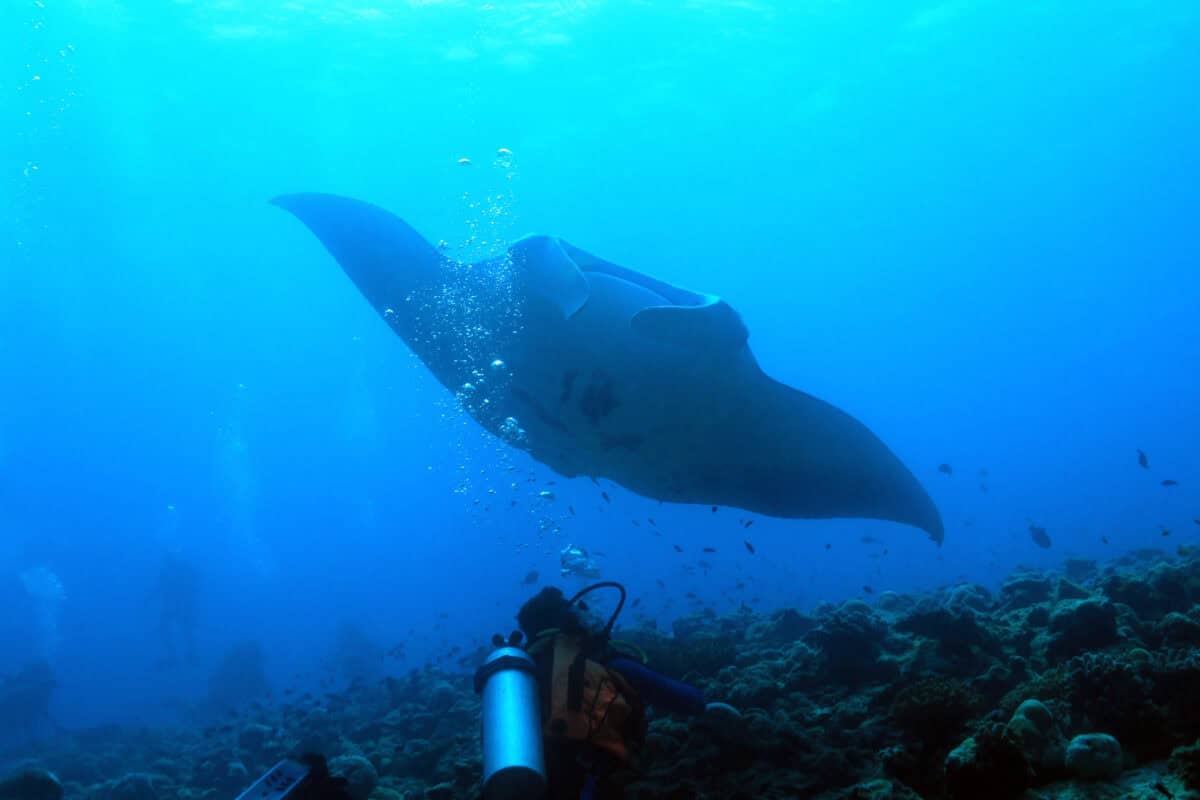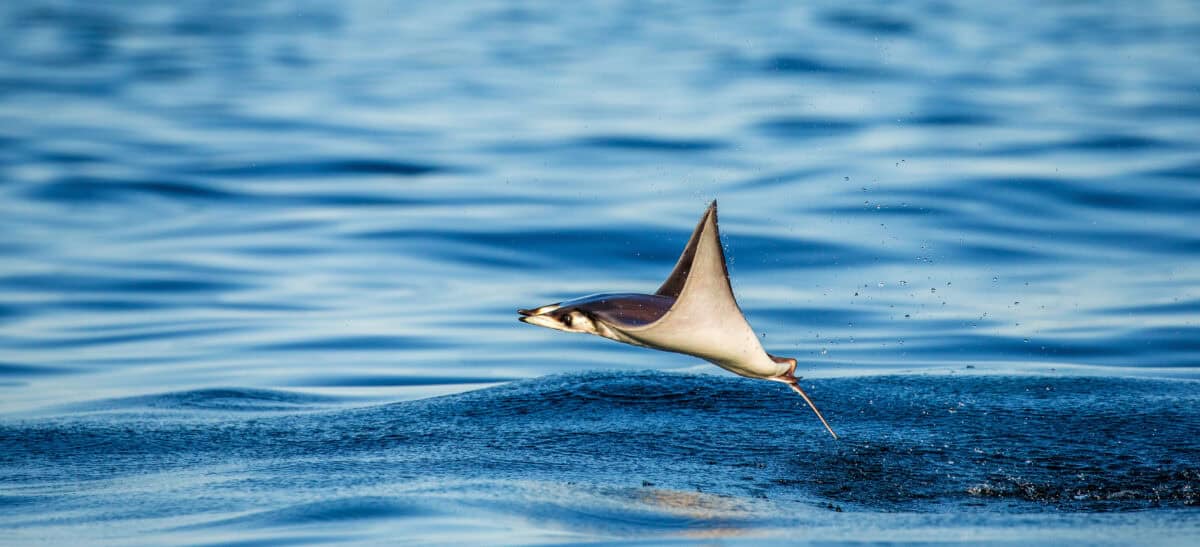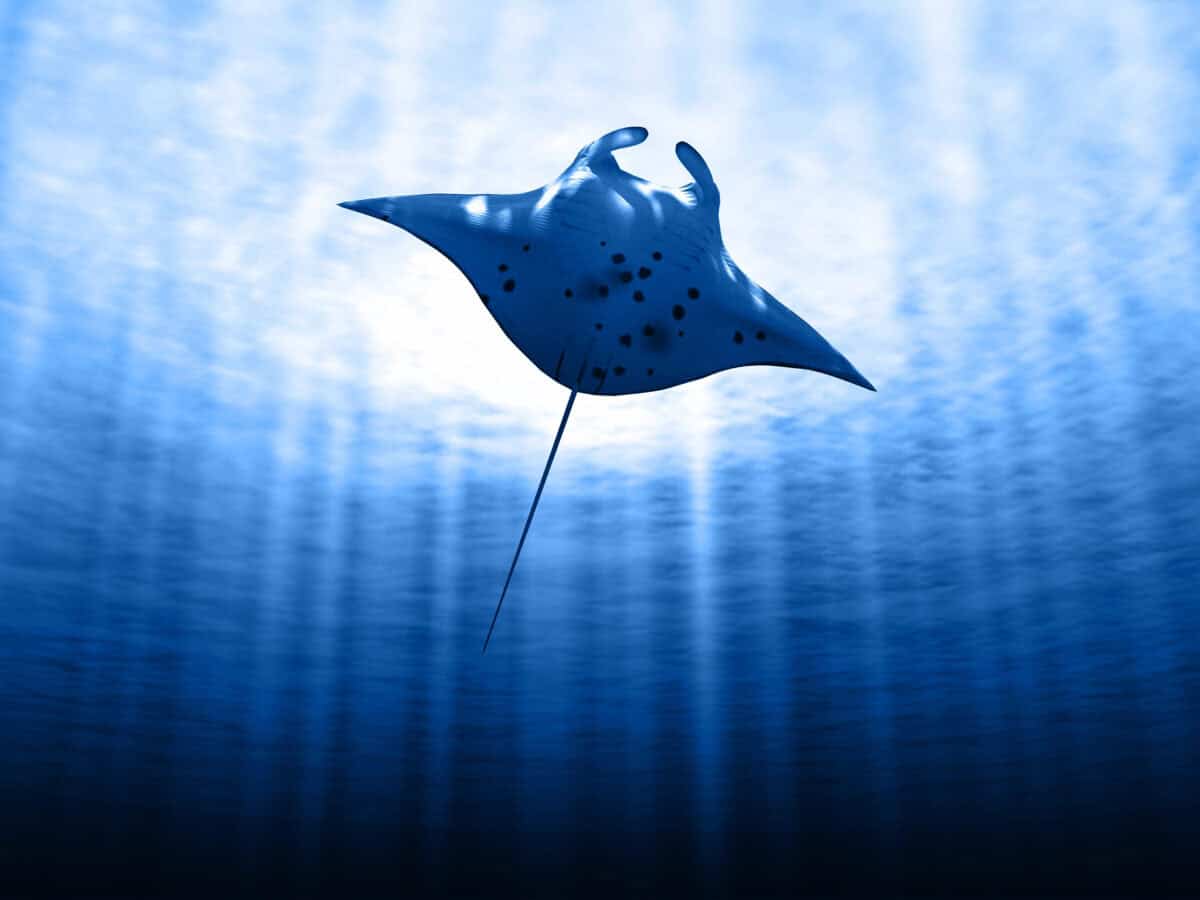Beneath the ocean’s surface lies a realm of extraordinary beauty and biodiversity, where gentle giants glide through crystal waters and vibrant coral ecosystems teem with life. Snorkeling with manta rays offers one of the most awe-inspiring underwater experiences possible, combining the thrill of encountering these majestic creatures with the colorful splendor of healthy reef systems. These filter-feeding rays, with wingspans reaching up to 29 feet, move through the water with balletic grace despite their impressive size, creating unforgettable encounters for snorkelers lucky enough to share their space.
Coral reefs, often called the rainforests of the sea, provide the perfect backdrop for these encounters. These living structures support approximately 25% of all marine species while covering less than 1% of the ocean floor. The combination of manta rays and healthy coral reefs creates snorkeling opportunities that showcase nature at its most spectacular. This guide explores the world’s premier destinations where snorkelers can responsibly witness these magnificent rays amid thriving reef ecosystems, along with practical advice for planning these bucket-list adventures.
Kona, Hawaii: Night Diving with Oceanic Mantas

The Kona coast of Hawaii’s Big Island offers one of the most reliable and accessible manta ray encounters in the world. What makes this location unique is the nighttime snorkeling experience, where powerful lights are directed into the water to attract plankton, which in turn draws in the hungry manta rays. At sites like Manta Village and Manta Heaven, snorkelers float on the surface while holding onto lit rafts, watching as these enormous creatures perform feeding somersaults just feet below them. The mantas here regularly reach wingspans of 12-16 feet, and individual rays are so consistent in their appearances that researchers have named many of them.
During daylight hours, Kona’s reefs provide excellent snorkeling opportunities with healthy coral formations and abundant tropical fish. Black Rock, Kahalu’u Beach Park, and Two Step at Honaunau Bay showcase Hawaii’s unique underwater ecosystem, including yellow tangs, butterflyfish, parrotfish, and even the occasional green sea turtle. The combination of night manta encounters and day reef exploration makes Kona an ideal destination for snorkelers seeking both manta rays and vibrant reef life in a single location. The best visibility occurs from April through October, though manta encounters are possible year-round.
Komodo National Park, Indonesia: Manta Cleaning Stations

Indonesia’s Komodo National Park, best known for its famous dragons on land, harbors an equally impressive underwater environment. The park encompasses numerous islands and reefs within the Coral Triangle, the global epicenter of marine biodiversity. Manta Point and Karang Makassar are renowned sites where reef manta rays congregate at cleaning stations—specific reef locations where smaller fish remove parasites from the mantas’ skin. These stations create predictable opportunities to observe mantas hovering in place, sometimes stacked in feeding formations, as they receive their cleaning services from wrasse and other fish species.
Beyond the mantas, Komodo’s reefs burst with color and diversity. Pink Beach and Batu Bolong feature some of the healthiest coral gardens in the region, supporting over 1,000 fish species and 260 types of coral. Currents can be strong in certain areas, so snorkelers should choose sites appropriate to their experience level and always follow guide recommendations. The best conditions for snorkeling in Komodo occur from April to November, with peak manta ray season between December and February when plankton blooms attract larger congregations of these filter feeders.
Hanifaru Bay, Maldives: Manta Ray Feeding Frenzies

Hanifaru Bay in the Maldives’ Baa Atoll offers one of the most spectacular manta ray gatherings on the planet. During southwest monsoon season (May to November), tidal currents funnel plankton-rich water into this horseshoe-shaped bay, creating feeding conditions that can attract over 100 manta rays simultaneously. These feeding aggregations sometimes form cyclone-like formations where the mantas spiral upward through dense plankton patches. The UNESCO Biosphere Reserve status of Baa Atoll ensures that snorkeling activities are regulated to minimize impact on these natural feeding behaviors.
The surrounding reefs of the Maldives complement the manta experience with extraordinary visibility often exceeding 100 feet and healthy coral systems supporting diverse marine life. Sites like Dharavandhoo Thila and Dhonfanu Thila showcase colorful hard and soft corals, schools of snappers and fusiliers, and reef sharks patrolling the edges. For snorkelers seeking both manta encounters and pristine reef exploration, the Maldives offers the perfect combination of accessible house reefs at most resorts and specialized excursions to manta hotspots. The peak season for manta ray aggregations runs from June to October, with August typically providing the most consistent sightings.
Coral Bay, Western Australia: Ningaloo Reef Mantas

Australia’s Ningaloo Reef stretches 160 miles along the country’s western coast and represents one of the world’s most accessible fringing reef systems. While whale sharks often steal the spotlight at Ningaloo, the area around Coral Bay hosts a resident population of reef manta rays throughout the year. Cleaning stations near Bateman Bay and North Reef provide reliable encounter opportunities where snorkelers can observe mantas hovering as cleaner wrasse and butterflyfish remove parasites from their bodies and gills. Unlike some destinations, Ningaloo offers the chance to see mantas in clear, shallow waters, making it ideal for snorkelers of various experience levels.
The reef itself deserves equal attention, with over 500 fish species and 300 coral varieties in pristine condition. Snorkeling spots like Oyster Bridge and the Coral Gardens showcase massive plate corals, colorful coral bombies, and abundant reef fish including parrotfish, angelfish, and anemonefish. The unique geography of Ningaloo, where the reef sits just yards from shore in many places, allows for easy access without long boat rides. The best time for combined manta ray and reef experiences runs from March to August, with particularly calm conditions from April to June. The area’s protection as a marine park ensures sustainable visitor practices and helps preserve this exceptional ecosystem.
Raja Ampat, Indonesia: Biodiversity and Mantas

Raja Ampat in eastern Indonesia represents the crown jewel of the Coral Triangle, hosting the highest recorded marine biodiversity on Earth. This archipelago of over 1,500 islands and cays creates a complex reef system where both oceanic and reef manta rays thrive. Manta Sandy and Magic Mountain stand out as reliable sites where mantas visit cleaning stations, allowing snorkelers to observe these graceful creatures in crystal-clear waters. The region’s remote nature and protected status help ensure healthy manta populations and pristine encounter conditions that feel far removed from mass tourism.
The reef systems of Raja Ampat showcase biodiversity unmatched anywhere else, with over 1,600 fish species and 75% of the world’s known coral species. Snorkeling sites like Melissa’s Garden and The Passage offer kaleidoscopic reef scenes with soft corals in every imaginable color, massive sea fans, and dense schools of reef fish creating living curtains above the coral. Many areas feature shallow reef tops perfect for snorkeling, with drop-offs where pelagic species often appear. While reaching Raja Ampat requires more effort than some destinations, the combination of healthy manta populations and the world’s most biodiverse reefs rewards visitors with a truly unparalleled underwater experience. October to April provides optimal conditions, with December to March offering the best visibility.
Isla Holbox, Mexico: Caribbean Manta Encounters

Off Mexico’s Yucatan Peninsula, the island of Isla Holbox offers a unique opportunity to snorkel with the Atlantic manta ray, which can reach wingspans of up to 23 feet. During summer months (June to September), these oceanic mantas gather in the nutrient-rich waters where the Gulf of Mexico meets the Caribbean Sea. Unlike some manta destinations that require deep water experiences, Holbox’s encounters often occur in shallow, clear water just offshore, making them particularly accessible for snorkelers. The feeding behavior of these mantas brings them close to the surface where they filter plankton with their cephalic fins extended forward like horns.
While Holbox doesn’t feature classic coral reef structures, the marine ecosystem supports vibrant sea grass beds and patch reefs that host a different but equally fascinating array of marine life. Snorkelers may encounter spotted eagle rays, bottlenose dolphins, and occasionally whale sharks sharing the waters with the mantas. The island’s status as part of the Yum Balam Nature Reserve helps protect these species and their habitat. The best conditions for manta encounters coincide with the summer season, with July and August typically offering the most consistent sightings. The relatively undeveloped nature of Isla Holbox provides a more intimate experience than some of Mexico’s busier tourist destinations.
Lady Elliot Island, Australia: Great Barrier Reef Mantas

Lady Elliot Island marks the southernmost coral cay of Australia’s Great Barrier Reef and hosts one of the most accessible manta ray populations in the world. The island’s location at the confluence of tropical and temperate waters creates ideal feeding conditions for manta rays year-round, with peak populations from May to August. What makes Lady Elliot particularly special is the combination of a resident manta population that stays near the island throughout the year and migrating oceanic mantas that join during winter months, creating opportunities for multiple encounters during a single visit.
The coral ecosystem around Lady Elliot Island remains one of the healthiest sections of the Great Barrier Reef, largely spared from recent bleaching events affecting northern regions. The Coral Gardens and Lighthouse Bommie snorkeling sites feature extensive hard coral formations, including massive plate and staghorn corals teeming with reef fish. Green and loggerhead turtles nest on the island and frequently appear during snorkeling excursions. The island’s eco-resort operates with sustainable practices, including 100% renewable energy, reinforcing the conservation focus that helps protect both the mantas and reef system. Winter months (May-August) offer the best manta ray encounters, while summer (November-February) provides warmer water and different marine life concentrations.
Yap, Micronesia: Traditional Manta Ray Sanctuaries

The remote island of Yap in Micronesia has perhaps the most consistent manta ray population of any destination worldwide. Thanks to traditional Yapese conservation practices that long preceded modern marine protection, the manta rays here have been safeguarded for generations. Mi’il Channel and Goofnuw Channel function as natural manta highways where these rays travel and congregate at cleaning stations. What distinguishes Yap is the reliability of encounters—mantas can be observed year-round, with resident populations that have become accustomed to respectful human presence.
Yap’s reef systems remain largely pristine due to the island’s isolation and strong traditional marine management practices. Snorkeling sites feature extensive hard coral gardens with exceptional visibility often exceeding 100 feet. The reef supports vibrant populations of reef sharks, turtles, and schooling fish that complement the manta experience. Traditional Yapese culture places spiritual importance on mantas, creating a respectful approach to interactions that benefits both the rays and visitors. While mantas appear year-round, the most consistent congregations occur from December through April during the northeast trade wind season. The combination of cultural significance, conservation success, and reliable manta encounters makes Yap a special destination for those willing to travel to more remote locations.
Nusa Penida, Bali: Accessible Manta Point

Just a short boat ride from Bali’s popular tourist areas, Nusa Penida offers one of Southeast Asia’s most accessible manta ray encounters. The aptly named Manta Point along the island’s southern coast serves as a cleaning station where reef mantas gather year-round. Unlike some manta destinations requiring multi-day trips or liveaboard vessels, Nusa Penida can be visited as a day trip from Bali, making it ideal for travelers with limited time. The site features a sloping reef where mantas hover near cleaning stations, allowing snorkelers to observe them from the surface in relatively shallow water.
Beyond Manta Point, Nusa Penida’s reefs showcase the rich marine biodiversity of the Coral Triangle. Crystal Bay and Gamat Bay feature healthy coral gardens with exceptional visibility and strong currents that support vibrant marine life including colorful nudibranchs, reef octopuses, and schools of tropical fish. These currents can be challenging, so choosing reputable operators familiar with snorkeler safety is essential. While manta rays appear year-round, the most reliable sightings occur during the dry season from April to October when water clarity peaks. The island’s increasing popularity means selecting early morning departures can help avoid crowds at popular snorkeling sites.
Responsible Manta Ray Snorkeling Practices

Encountering manta rays in their natural habitat comes with the responsibility to minimize human impact on these vulnerable species. Proper snorkeling etiquette includes maintaining a respectful distance of at least 10 feet (3 meters) from any manta ray and never attempting to touch, chase, or block their path. Mantas may approach curious snorkelers naturally, but forcing interactions causes stress and can disrupt critical feeding or cleaning behaviors. Selecting tour operators that follow sustainable wildlife viewing guidelines, such as limiting group sizes and providing ecological briefings, helps ensure responsible encounters. Many legitimate operations contribute data to manta research projects, turning tourist activities into valuable citizen science.
Reef-safe sunscreen is essential when snorkeling near coral ecosystems, as common chemical ingredients like oxybenzone and octinoxate can damage coral health and affect manta ray feeding areas. Physical barriers like rash guards and wetsuits reduce the need for sunscreen while providing additional thermal protection. Understanding that both manta rays and coral reefs face significant conservation challenges—from targeted fishing to climate change impacts—can help snorkelers appreciate the privilege of these encounters. Many leading manta ray destinations now limit daily visitor numbers and enforce marine protected area regulations, measures that deserve visitor support even when they limit access to popular sites.
Essential Gear and Preparation for Manta Ray Snorkeling

Successful manta ray snorkeling experiences depend on proper equipment and preparation. A well-fitting mask with a silicon skirt prevents leaking and fogging, while a dry snorkel with splash guard helps prevent water entry during surface swells common at offshore manta sites. Comfortable fins provide necessary propulsion for navigating currents without causing leg cramps during extended snorkeling sessions. For areas with cooler water or night snorkeling like Kona, a 3mm wetsuit offers thermal protection without restricting movement. A neoprene hood provides additional warmth in cooler waters and protects against sun exposure during extended surface floats while waiting for mantas.
Beyond equipment, physical preparation enhances the manta ray experience. Basic swimming fitness allows snorkelers to comfortably remain in the water for 45-60 minutes—the typical duration of manta encounters. Practicing proper breathing techniques through a snorkel prevents hyperventilation and extends comfortable water time. For those prone to motion sickness, natural remedies like ginger or over-the-counter medications taken before boat departures can prevent discomfort that might otherwise cut an experience short. Finally, improving underwater photography skills before the trip helps capture memorable images without stressing the animals or missing the magical experience while struggling with camera settings.
Planning Your Ultimate Manta Ray Adventure

The journey to snorkel with manta rays represents a pinnacle experience for ocean enthusiasts, combining unforgettable wildlife encounters with immersion in the world’s most vibrant reef ecosystems. Each destination offers unique advantages, from the accessibility of Kona’s night mantas to the biodiversity spectacle of Raja Ampat or the cultural significance of Yap’s manta sanctuaries. While ambitious travelers might build a bucket list incorporating multiple locations, even a single well-chosen destination can provide transformative encounters with these magnificent creatures. The most successful trips often balance dedicated manta excursions with days of rest, exploration, and flexibility to accommodate changing ocean conditions. Planning around the local manta season—typically dictated by plankton blooms or tidal shifts—is crucial for maximizing your chances. Equipping yourself with proper snorkel or dive gear, booking with eco-conscious operators, and learning about manta behavior beforehand will deepen both your safety and appreciation. Whether drifting silently beneath their sweeping wings or witnessing their graceful barrel rolls, every encounter becomes a memory etched in salt and wonder.
Conclusion

Snorkeling with manta rays alongside vibrant reef life offers one of the most awe-inspiring marine adventures on the planet. From the nutrient-rich waters of the Maldives to the volcanic shores of Hawaii and the remote reefs of Indonesia, each destination reveals a unique marine tapestry teeming with color and motion. Mantas glide effortlessly through the water while vivid schools of fish dart among corals, creating a living kaleidoscope that captivates both seasoned snorkelers and first-time ocean explorers. These rare encounters not only thrill but also foster a deeper connection with the ocean’s rhythms and the creatures that call it home.
As global interest in marine tourism grows, so too does the responsibility to snorkel sustainably and with respect. Choosing ethical tour operators, following local guidelines, and avoiding contact with marine life ensures that these fragile ecosystems remain healthy for future generations. Snorkeling with manta rays is more than just an adventure—it’s a chance to become a steward of the sea. By approaching these experiences with reverence and care, travelers can help protect the underwater wonders that make such journeys possible.
- Kitsune: The Trickster Fox Spirits of Japan - August 23, 2025
- Where to Snorkel With Manta Rays and Colorful Reef Life - August 23, 2025
- Killer Whales Have Culture, Accents, and Ruthless Hunting Tactics - August 23, 2025

